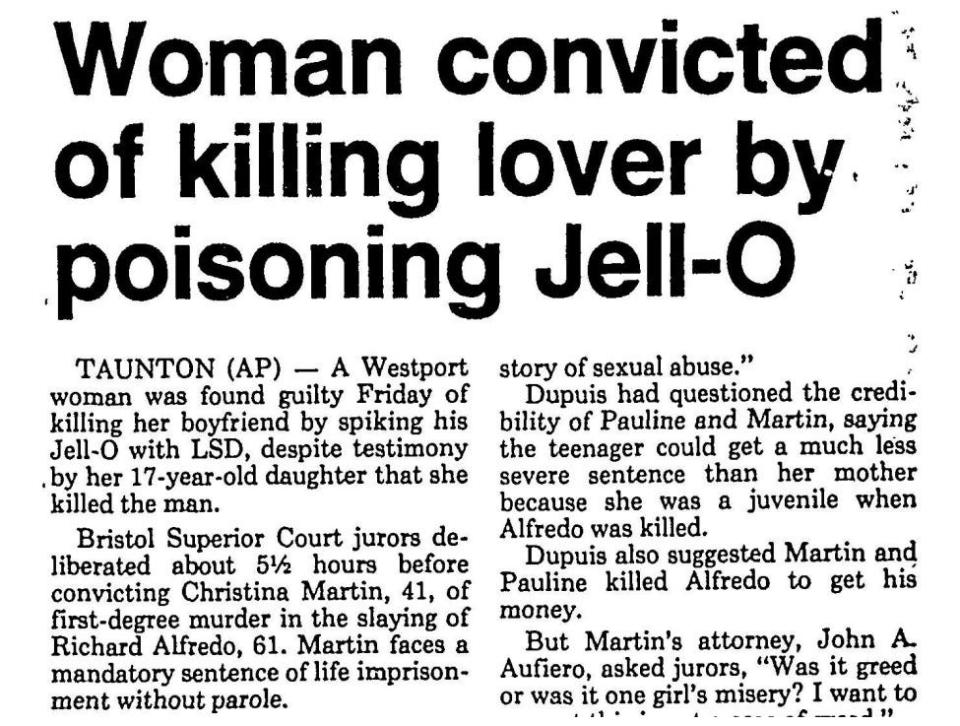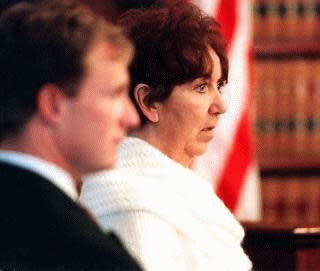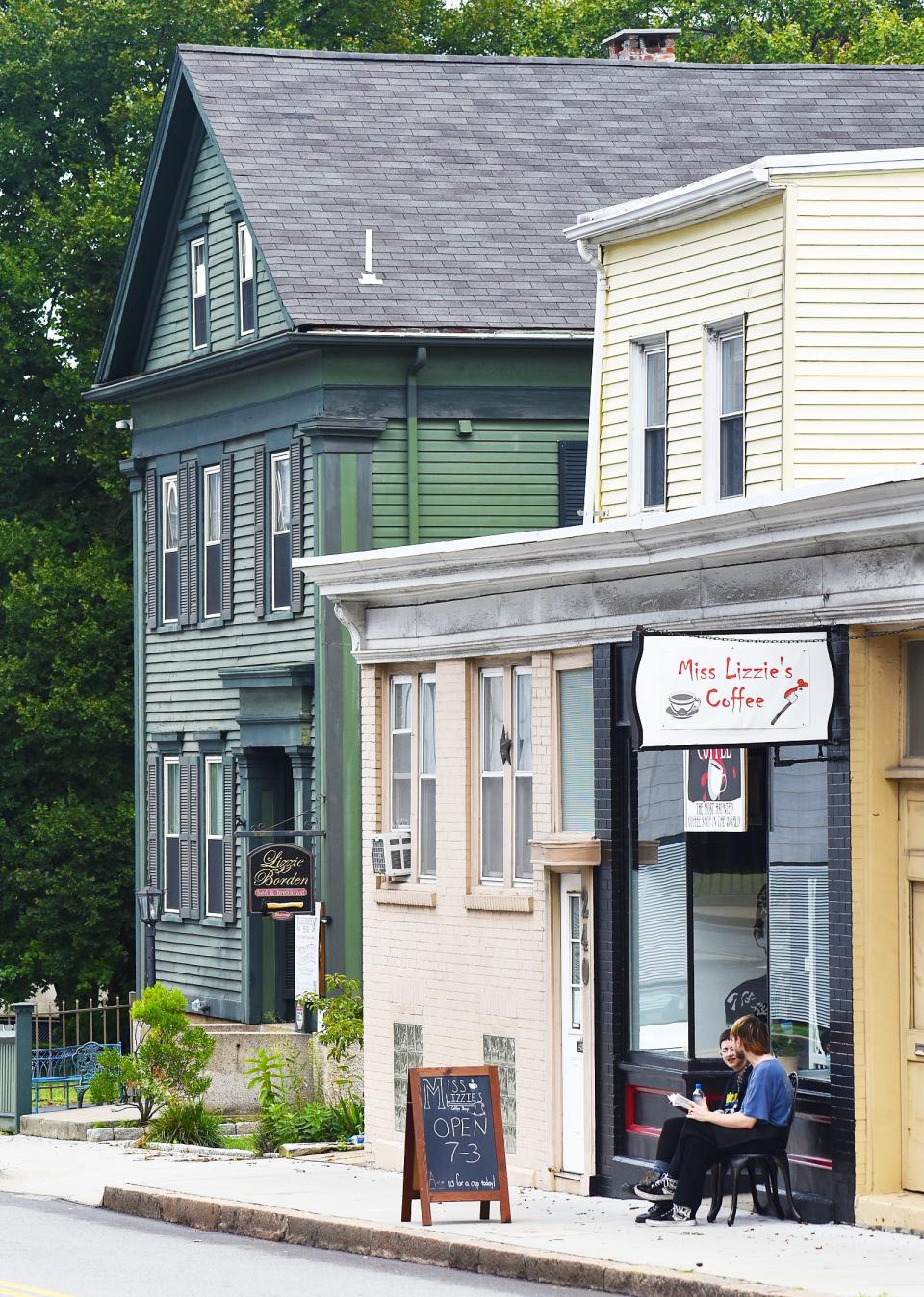Poisoned Jell-O, a killer mom, and a career-criminal murderer: 3 shocking true crime tales
Fall River is home to one of the most notorious unsolved murders of all time. But beyond Lizzie Borden, the area is a true-crime capital, with shocking stories of murder and betrayal throughout its history.
In a previous installment, we looked at three terrifying true-crime tales from SouthCoast's past. Here are three more true stories, ripped from the headlines:

Richard Alfredo: Victim of the LSD ‘Jell-O Killer’
The crime: In January 1990, Christina Martin called authorities to the Westport home where she lived with her boyfriend, Richard Alfredo — the 61-year-old man had apparently had a heart attack and died. He had a history of heart trouble, and an official medical report noted he died of natural causes; he was buried without an autopsy. In the weeks after his death, however, rumors began circulating at Westport High School that Alfredo was poisoned, and that his girlfriend and her daughter did the deed. Alfredo’s body was exhumed, and a preliminary toxicology test showed the presence of LSD in his system. A police investigation turned up allegations that Martin and her daughter, Teasha Pauline, had tried to buy illegal drugs from local teens for the express purpose of killing her boyfriend. Martin was accused of dumping massive quantities of LSD into strawberry Jell-O she served to Alfredo as dessert, causing his heart rate to speed up and kill him. In the months after Alfredo’s death, Martin and Pauline had fled the country and were found in Montreal, Canada, where Martin told police she’d poisoned Alfredo.
It's not Lizzie Borden: New book looks at the Fall River axe murder you never knew about

The trial: In 1992, Martin’s case went before a court. Her daughter, Teasha Pauline, then 17, testified that she'd been molested by Alfredo for years and that she was the one who spiked Alfredo’s Jell-O. At her trial, Martin testified that she’d tried to take the blame to protect Pauline, insisting she could not commit the killing herself. But prosecutors cast doubt on Martin and Pauline’s story, insisting that Martin had killed Alfredo for money; they did not charge Pauline with murder. A jury found Martin guilty of first-degree murder and she was sentenced to life in prison.
The aftermath: Several years later, while up for appeal, a criminal defense attorney discovered key flaws in Martin’s case — among them, that the positive toxicology test for LSD was only preliminary, with a gold-standard test turning up negative; and this valuable evidence was never shared with the defense. Martin’s conviction was overturned in 1996, a decision upheld by the Supreme Judicial Court. When she was to be prosecuted a second time, Martin took a deal that saw her plead guilty to manslaughter in exchange for time served; still, she insisted she never killed her boyfriend.
Unanswered questions: Who really killed Alfredo, and for what reason? Was Pauline telling the truth when she took the blame for the poisoning? If so, why was she not charged? No one knows.

Eliza Darling Borden: Murder-suicide on Second Street
The crime: When Lizzie Borden was on trial for murder, it was imagined by some that perhaps madness ran in her family, given the grim story of Eliza Darling Borden. In 1848, Lizzie’s great-uncle Lawdwick Borden was married to Eliza, his second wife. The two lived on Second Street right next door to where Andrew, Abby, Lizzie and Emma would later settle, in the building now occupied by Miss Lizzie's Coffee. Eliza and Lawdwick had three children, Maria, Eliza Ann and Holder — and this seems to have left Eliza mentally disturbed. It’s possible Eliza was experiencing post-partum depression and had become unstable, but it’s impossible to diagnose her from what little we know of her. One day in May, Eliza decided the children had to die. She took her two youngest children to the basement and dropped them — Eliza Ann, 3, and Holder, 6 months — into the cistern where they drowned to death. Then she cut her own throat with her husband’s straight razor and, according to the Fall River Weekly News, “died instantly.” Only Maria was spared.
Did Lizzie Borden use an alias? 5 facts you never knew about Fall River's infamous murders
The aftermath: Thanks to the tenuous connection to Lizzie Borden — Eliza was only related by marriage — the story has lived on as a mix of true-crime and legend. Some tellings of the story insist that Eliza held her children under water to drown them, others claim that she dropped them into a well and they drowned slowly. Some have even claimed that Eliza attempted to kill Maria too, but she was able to climb out. The details are unknown. However she survived, Maria lived 64 years — long enough to see Lizzie, her first cousin once removed, put on trial for murder. The tale has also lived on as a ghost story, with tour guides at the Lizzie Borden House claiming that guests have heard children laughing.
Unanswered questions: What happened to Eliza to make her commit such a brutal murder-suicide?

Gene Travis: Sadistic Freetown thrill-killer and prison escapee
The crime: Freetown native Gene Travis was known in town as a troubled kid from a broken home. His run-ins with the legal system began when he was 18, in 1959, for car theft. Thereafter, he spent most of his life in prison. But in 1985 that Travis went on a killing spree. He had been serving 19 years in Walpole for armed robbery and attempted murder. Thirty-three days after his release, on Dec. 9, 1985, Travis kidnapped Simone Auger from Globe Video in Fall River, a store owned by her parents. She would be found four months later, strangled to death with an electrical cord and her body dismembered, in the woods in Tiverton. On Dec. 10, 1985, while police were searching for Auger, Travis invaded a shoe store in North Kingstown, R.I., killing owner Janice Pinelli by stabbing her 23 times. He was caught in East Greenwich, R.I.

The trial: Former Bristol County DA Ronald Pina called Travis "an animal who would kill in two seconds ... He was proud of what he did. This is a guy who kills for the sake of killing.” Travis never expressed remorse — and in fact seemed pleased with himself. In 1986 he was the first person in Rhode Island sentenced to life without parole for the Pirelli murder, and was sentenced in 1988 to two consecutive life sentences for the Auger murder. "I was broke and I just had to go out and do what I do best," Travis explained in a 1994 interview. "A human life doesn't mean too much to me."
The aftermath: In 1996, Travis was reported missing from the ACI in Cranston, R.I., where he had been serving his sentence. It was not the first time Travis had broken out of this prison — in 1974, he escaped the ACI and was on the run for 15 days. This time, an intense manhunt was launched in Fall River and throughout the southern New England area. He was found after about 10 hours — he had hidden inside a garbage truck, and was nearly crushed to death by the compactor. Travis was sentenced to 15 more years on top of his three life sentences for the prison break, which he called "a new hobby." The extra time made no difference. He died of cancer while in prison in 2000. Stanley Pinelli, husband of Janice, told reporters when he heard the news: "He should have been dead when he was born; it would have been a lot nicer world."
Unanswered questions: What drove Travis to commit these women, and was his plan to kill again when he escaped? That one might be best left unanswered.
Dan Medeiros can be reached at dmedeiros@heraldnews.com. Support local journalism by purchasing a digital or print subscription to The Herald News today.
This article originally appeared on The Herald News: True tale of Borden relative who drowned kids inspired ghost stories

